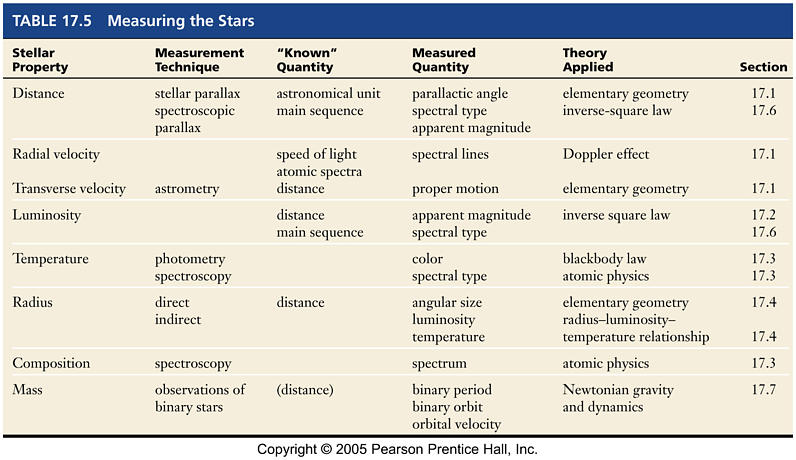The Classification of Stars
Star's Absorption SpectrumUsed to classify Stars (according to Spectral Class)

Mnemonic for O B A F G K M :
- Oh, Be A Fine Guy (Girl), Kiss Me
- Types of Spectra
- Hydrogen Lines Strongest in A spectra
- Molecular Lines Strongest in M spectra
- Neutral Metals Strongest in G,K, and M
- Neutral Helium Strongest in B
- Ionized Helium Strongest in O
The spectral class matches with surface temperature
Each lettered spectral class is further sub-divided in 10 subdivisions, denoted by 0-9
- so, for example:
- The Sun is G2,
- Betelgeuse is M2,
- and Barnard's star is M5





